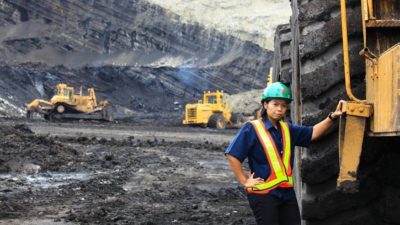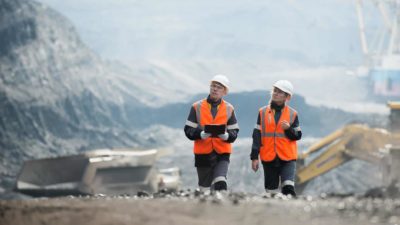Owners of Rio Tinto Ltd (ASX: RIO) stock will have seen the ASX mining company's recent FY24 result for the 12 months to December 2024.
Despite Rio Tinto stock being impacted by an iron ore price that was 11% lower than the year prior, the company's operating cash flow increased 3% to US$15.6 billion, underlying operating profit (EBITDA) only dropped 2% to US$23.3 billion, net profit rose 15% to US11.5 billion, and the annual dividend per share was cut by just 8% to US$4.02.
But, those were just the headline numbers. There's more to the result than meets the eye and I think investors need to know about at least three elements of the report.
Growing non-iron earnings
The business has long been seen as one of the largest iron ore miners in the world. It still is. Iron ore still makes up the lion's share of the ASX mining company's operating profit.
However, pleasingly for Rio Tinto stock investors, two of its other commodities helped offset a lot of the iron ore pain felt in FY24.
Rio Tinto reported that in the 12 months to December 2024, it made US$24.4 billion of reportable segment underlying operating profit (EBITDA). Iron ore's underlying operating profit fell 19% to US$16.2 billion.
But, pleasingly, aluminium's underlying operating profit jumped 61% to US$3.7 billion, and copper's underlying operating profit soared 75% to US$3.4 billion.
The average London Metals Exchange (LME) price for both copper and aluminium increased by 8% during the period. There was also a 3% lift in copper-equivalent sales volumes.
In my view, the less Rio Tinto relies on iron ore, the better.
Rising net debt
I'm not too concerned about the fact that Rio Tinto's net debt position has worsened compared to last year as it's still relatively low compared to the size of the business, but it is worth noting (and does have some negative implications).
At 31 December 2024, the company had net debt of US$5.5 billion, an increase of US$1.3 billion compared to 31 December 2023.
Its net gearing ratio (net debt to total capital) was 9% at 31 December 2024, compared to 7% at 31 December 2023.
More net debt obviously comes with a higher annual interest rate cost, assuming the debt's interest rate stays the same.
The company continues to pay a large dividend to owners of Rio Tinto stock (60% of net profit), so it's a balancing act between ensuring a stable balance sheet and rewarding shareholders.
Numerous projects progressing
Rio Tinto is working on a number of projects to help grow its production and profitability in the coming years. Investors should keep an eye on how the business plans to change and whether plans are on schedule and on budget.
At the Oyu Tolgoi copper-gold mine in Mongolia, Rio is working on various aspects of the mine's infrastructure. It has commissioned the third and fourth ventilation shafts and it's also commissioning the conveyor belt to take material to the surface. The mine is ramping up to 500 thousand tonnes of copper per year from 2028 to 2036.
At the Simandou iron ore project in Guinea, the SimFer mine is on track to deliver first production at the mine gate in 2025, ramping up over 30 months to an annualised capacity of 60 metric tonnes (mt) per year (or 27mt per year if talking about the Rio Tinto share of that total production).
In the Pilbara, it is advancing five replacement iron ore projects, including Western Range, where the first ore production is on schedule for the first half of 2025.
The company has also approved a US$2.5 billion plan to expand the Rincon lithium project in Argentina. It also has an agreement to acquire Arcadium Lithium CDI (ASX: LTM) for US$6.7 billion, which would make Rio Tinto a global leader in the energy transition commodity space.
Once all of these plans are complete, the company will be a much more diversified business, which could help boost confidence in Rio Tinto stock.









